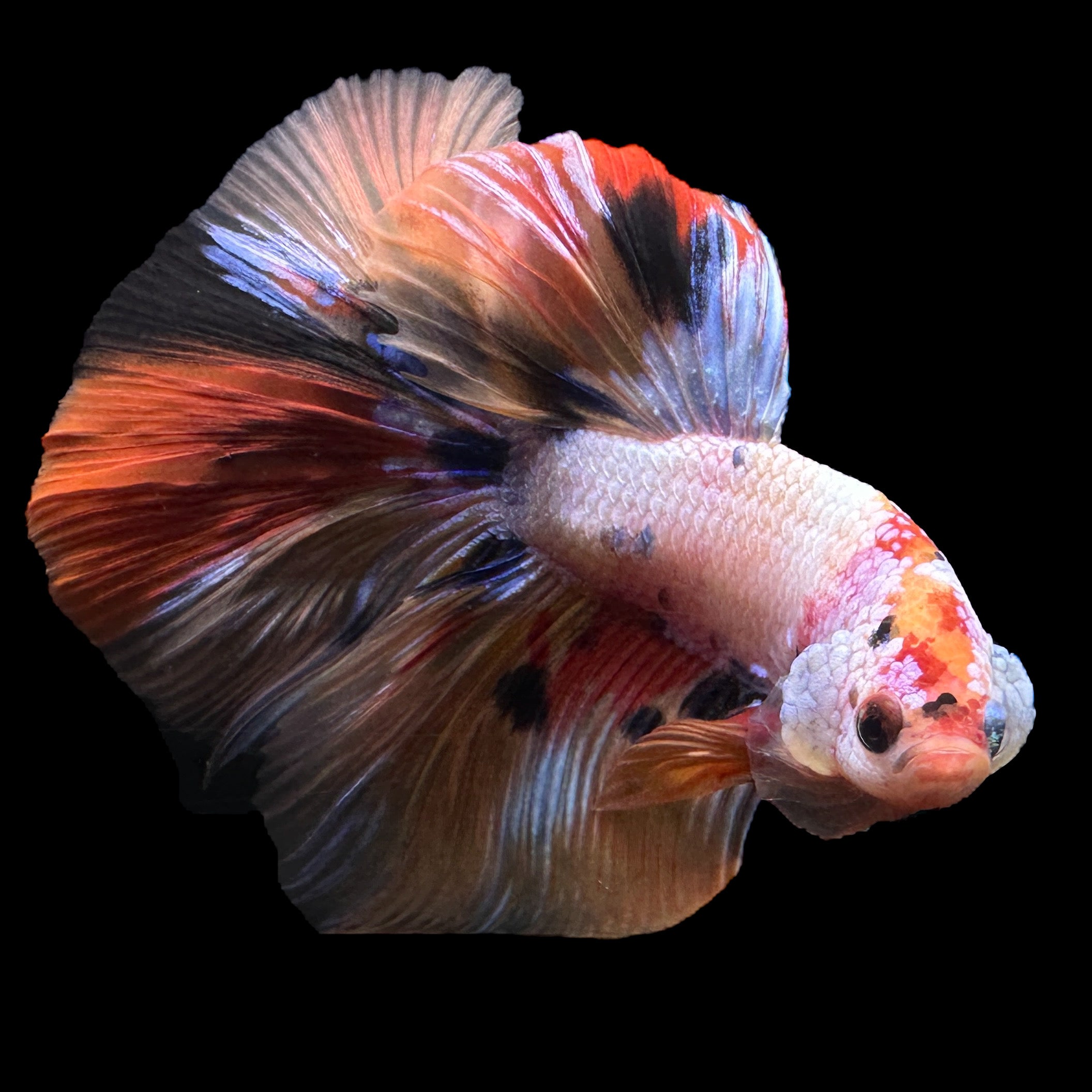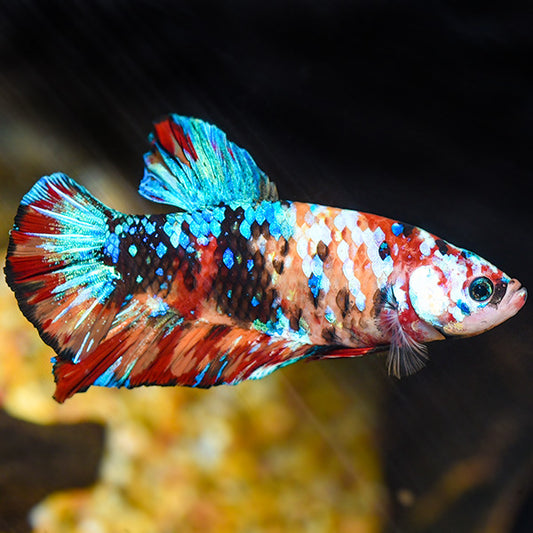Everything About Betta Fish: Recognizing Their Special Needs, Actions, and the most effective Practices for Optimal Treatment
Comprehending the distinct demands and habits of Betta fish is vital for any type of aquarist looking to give optimal treatment. These captivating animals, native to the warm waters of Southeast Asia, exhibit distinctive territorial tendencies and call for specific ecological problems to grow. From choosing the right storage tank size to acknowledging possible wellness problems, numerous factors considerably affect their health. As we explore these components even more, the ramifications for both amateur and skilled fish keepers come to be significantly evident, increasing inquiries concerning just how best to accommodate these exceptional fish in our homes.
Betta Fish Summary
Although typically appreciated for their lively shades and streaming fins, Betta fish, clinically recognized as Betta splendens, are complicated animals that need particular like flourish. Originating from Southeast Asia, these freshwater fish are known for their territorial nature and unique actions. Betta fish show sex-related dimorphism, with men showing a lot more brilliant colors and longer fins than ladies.
Their aggressive propensities, specifically among males, demand mindful factor to consider when housing them. Bettas are frequently kept in single-specimen containers to stop territorial conflicts. They can coexist peacefully with particular suitable types in bigger neighborhood tanks, offered the environment meets their demands.

To ensure ideal treatment, aquarists need to recognize their unique behavioral characteristics, dietary demands, and environment requirements. betta fish. With appropriate interest, Betta fish can display their lively characters and thrive in a properly maintained fish tank setting
Natural Habitat and Environment
Betta fish thrive in a varied range of all-natural habitats, primarily located in the superficial waters of Southeast Asia, consisting of rice paddies, swamps, and slow-moving streams. These atmospheres are defined by cozy temperatures, generally in between 75 ° F and 82 ° F(24 ° C and 28 ° C ), and a pH degree varying from 6.5 to 7.5, which is ideal for their health and wellness.
In their natural environments, Betta fish are accustomed to dense plant life, offering both shelter and reproducing grounds. The existence of plants such as floating water lilies and thick yards not just supplies protection from killers however likewise adds to the oxygenation of the water, which is vital for their respiratory system demands. In addition, these settings commonly have areas of still water, allowing Betta fish to display their all-natural habits such as bubble nesting.
Recognizing the natural environment of Betta fish is vital for aquarium fanatics. Replicating these conditions-- through water temperature level, pH balance, and the inclusion of real-time plants-- can substantially enhance the total health and long life of these exciting fish, guaranteeing they flourish in a home fish tank setup.
Social Behavior and Communications
Comprehending the Recommended Site social habits and communications of Betta fish is necessary for successful aquarium management. Betta fish, or Siamese battling fish, are understood for their special behavior traits, identified mostly by territoriality and hostility. Males, particularly, show highly hostile actions in the direction of each other, causing the infamous track record of Betta fish as competitors. In a restricted space, 2 males can involve in terrible fights, frequently leading to injury or fatality.
Alternatively, female Bettas exhibit less aggressive actions and can exist together in teams, called sororities, if presented properly. However, it is critical to monitor their interactions carefully, as hierarchy and dominance can bring about conflicts. Comprehending the characteristics within a Betta community is vital; developing hiding spots and making certain adequate room can alleviate aggression.
On top of that, Betta fish may likewise present inquisitiveness and social actions towards other species. While they can coexist with particular non-aggressive container companions, it is necessary to select suitable species to stay clear of stress and aggression. Overall, recognizing these social go to these guys communications is key to fostering an unified fish tank environment for Betta fish.
Necessary Treatment Standards
Providing appropriate look after Betta fish is essential to their wellness and well-being. To guarantee a growing setting, it is important to maintain ideal water conditions. The water temperature ought to be maintained in between 76 ° F and 82 ° F(24 ° C to 28 ° C), while pH degrees need to vary from 6.5 to 7.5. Normal water adjustments-- around 25% regular-- aid preserve water top quality.
Betta fish require an ideal storage tank dimension; a minimum of 5 gallons is advised to give sufficient room for swimming and hiding. Include decors and plants to create a revitalizing environment, but stay clear of sharp objects that might hurt their fragile fins.

Lastly, ensure the storage tank is outfitted with a filter to keep the water clean, however use a gentle filter to prevent strong currents that can emphasize the fish. By complying with these essential care guidelines, proprietors can advertise a healthy and balanced and dynamic Betta fish.
Common Wellness Issues and Solutions
In the care of Betta fish, awareness of usual health issues is important for keeping their wellness. One widespread concern is fin click over here rot, commonly created by bad water high quality or bacterial infection. Signs and symptoms consist of torn or discolored fins. To deal with fin rot, boost water conditions and consider using a broad-spectrum antibiotic.
Another usual condition is ich, a parasitic infection defined by white places on the fish's body (betta fish). Treatment entails enhancing water temperature and including aquarium salt to the storage tank, as this can help remove the parasite
Swim bladder condition is additionally regularly observed, resulting in buoyancy problems. This problem may emerge from overfeeding or bowel irregularity. A fasting duration of 24-48 hours, adhered to by a diet of blanched peas, can offer alleviation.
Finally, bettas may experience velour illness, indicated by a gold dust-like look on their skin. Treatment normally requires medication particularly designed for outside bloodsuckers, alongside boosted storage tank health.
Normal monitoring of water parameters, preserving a tidy atmosphere, and giving a well balanced diet are important safety nets. By dealing with these health and wellness problems immediately, Betta fish can lead much healthier, extra vibrant lives.
Conclusion
In summary, effective betta fish treatment needs an understanding of their unique demands and habits. Regular surveillance of health and wellness and water quality, along with a well balanced diet plan, contributes to the long life and vibrancy of betta fish.